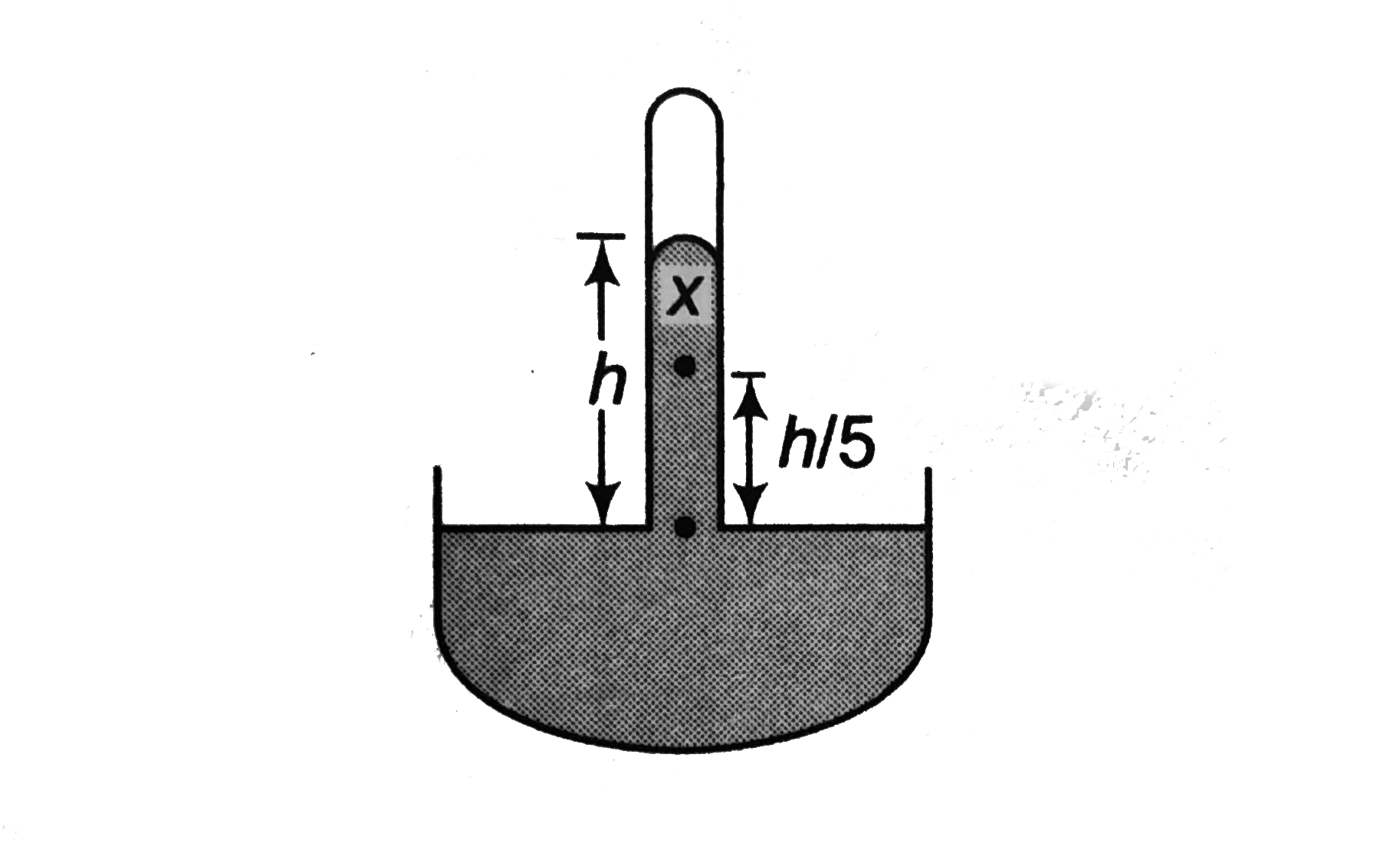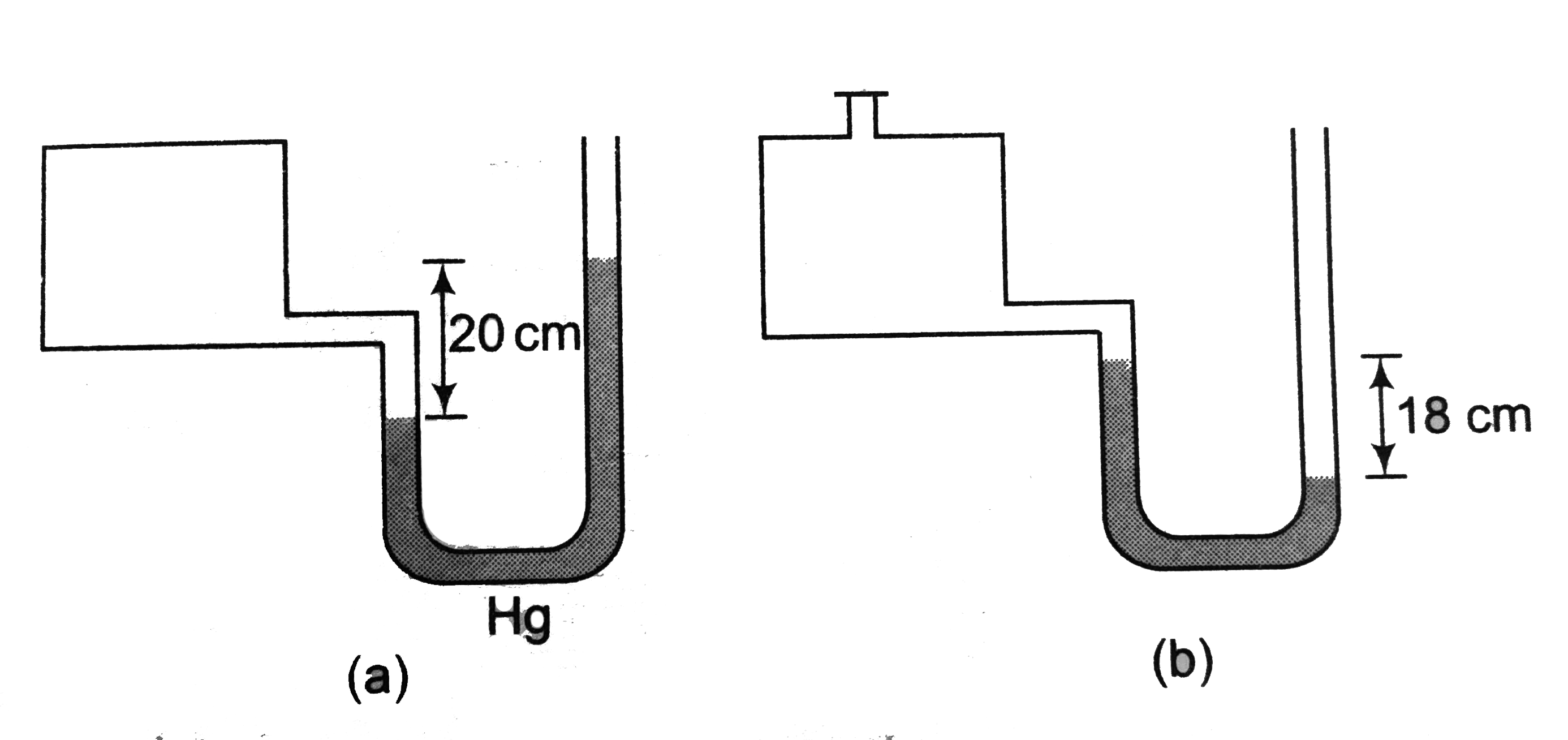The manometer has a water column difference of 50 cm . If the atmospheric pressure is Pa, find the pressure of the gas in the container .
To find the pressure of the gas in the container using the given information about the manometer, we can follow these steps:
1. Understand the Problem: We have a manometer indicating a water column difference of 50 cm, and we know the atmospheric pressure is 105 Pa. We need to find the pressure of the gas in the container.
2. Convert Units: The height of the water column is given in centimeters. We need to convert this to meters for our calculations:
h=50 cm=0.5 m
3. Identify Relevant Formulas: The pressure in the container can be calculated using the hydrostatic pressure formula:
P=P0+ρgh
where:
- P is the pressure of the gas in the container,
- P0 is the atmospheric pressure,
- ρ is the density of the fluid (water in this case),
- g is the acceleration due to gravity,
- h is the height of the water column.
4. Substitute Known Values: We know:
- P0=105 Pa
- ρ=1000 kg/m3 (density of water)
- g=9.8 m/s2
- h=0.5 m
Now substituting these values into the formula:
P=105 Pa+(1000 kg/m3)(9.8 m/s2)(0.5 m)
5. Calculate the Hydrostatic Pressure:
ρgh=1000×9.8×0.5=4900 Pa
6. Calculate the Total Pressure:
P=105 Pa+4900 Pa=104900 Pa
7. Convert to Kilopascals: To express the pressure in kilopascals:
P=104900 Pa1000=104.9 kPa
8. Final Answer: The pressure of the gas in the container is:
P=104.9 kPa
h=50 cm=0.5 m
P=P0+ρgh
where:
- P is the pressure of the gas in the container,
- P0 is the atmospheric pressure,
- ρ is the density of the fluid (water in this case),
- g is the acceleration due to gravity,
- h is the height of the water column.
- P0=105 Pa
- ρ=1000 kg/m3 (density of water)
- g=9.8 m/s2
- h=0.5 m
P=105 Pa+(1000 kg/m3)(9.8 m/s2)(0.5 m)
ρgh=1000×9.8×0.5=4900 Pa
P=105 Pa+4900 Pa=104900 Pa
P=104900 Pa1000=104.9 kPa
P=104.9 kPa
Similar Questions
The heights of mercury surfaces in the two arms of the manometer shown in figure are 2 cm and 8cm. Atmospheric pressure =1.01×105Nm−2 . Find (a). the pressure of the gas in the cylinder and (b). the pressure of mercury at the bottom of the U tube.

View SolutionThe heights of mercury surfaces in the tow arms of the manometer shown in figure are 2 cm and 8cm. Atmospheric pressure =1.01×105Nm−2 . Find
a) the pressure of the gas in the cylinder
b) the pressure of mercury at the bottom of the U tube.

View SolutionWater is filled in a flask up to a height of 20 cm. The bottom of the flask is circular with radius 10 cm. If the atmospheric pressure is 1.01×105 Pa, find the force exerted by the water on the bottom. Take g=10ms−2 and density of water =1000 kgm^-3.
View SolutionThe height of mercury barometer is h when the atmospheic pressure is 105Pa. The pressure at x in the shown diagram is

View SolutionCooling of water under atmospheric pressure is a/an
View SolutionA manometer reads the pressure of a gas in a enclosure as shown in figure(a) When some of the gas is removed by a pump, the manometer reads as in (b). The liquid used in the manometers is mercury and the atmospheric pressure is 76cm of mercury.

(i) Give the absolute and gauge pressure of the gas in the enclosure for cases (a) and (b) in units of cm of mercury .
(ii) How would the level change in case (b) if 13.6cm of water are poured into the right limb of the manometer?
View SolutionA manometer reads the pressure of a gas in a enclosure as shown in figure(a) When some of the gas is removed by a pump, the manometer reads as in (b). The liquid used in the manometers is mercury and the atmospheric pressure is 76cm of mercury.

(i) Give the absolute and gauge pressure of the gas in the enclosure for cases (a) and (b) in units of cm of mercury .
(ii) How would the level change in case (b) if 13.6cm of water are poured into the right limb of the manometer?
View SolutionA gas is filled into a bulb connected to an open limb manometer. The level of mercury in the open arm is 2.1 cm lower than that in the other arm of the manometer. The atmospheric pressure is 740 mm. What is the pressure of the gas?
View SolutionWhat is the excess pressure inside (i) a drop (ii) a bubble of water of diameter 2mm. If the atmospheric pressure is 1.01×105Pa, calculate the total pressure inside them =σ=72×10−3N/m.
View SolutionA manometer is connected to a gas containing bulb The open arm reads 43.7cm where as the arm connected to the bulb reads 15.6cm If the barometric pressure is 743mm mercury What is the pressure of gas in bar ? .
View Solution

